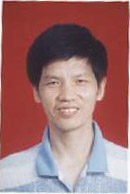>>Keynote Speaker

Dr.Mahendra Mallick, Independent Consultant, USA
Associate Editor(副主编), IEEE Transactions on Aerospace and Electronic Systems
Title: Histrory, Development, and Applications of Estimation Theory and Linear and Nonlinear Filtering
Abstract: Estimation and filtering algorithms are widely used in space applications, sonar, radar, video and tracking, robotics, computer vision, biomedical applications, air traffic control, autonomous driving systems, etc. In this talk we shall discuss the history of estimation theory starting with Gauss’s formulation of least-squares (LS) applicable to the motion of planets, comets, and asteroids. The differences between the Fisher formulation and Bayesian formulation in estimation theory will be analyzed. Special attention will be given to the famous Kalman filter (KF), which forms the foundation of many current nonlinear approximate filters such as the extended KF (EKF), unscented KF (UKF), and cubature KF (CKF). Furthermore, the talk will discuss controversies associated with the invention of the LS and KF. We shall also cover the sequential Monte Carlo based particle filter (PF), which has received a great deal of attention during the last two decades because of its ability to handle nonlinear non-Gaussian filtering problems. We shall summarize various nonlinear filters and present numerical results for some real-world filtering problems.

Prof.Jie Du(杜杰教授)
Hainan University(海南大学)
Title: DNA Nanotechnology Assisted by Cationic Comb-type Copolymer
Abstract: Nanometer-scaled DNA devices based on programmed assembly of DNA helices has become a powerful tool in DNA nanotechnology fields beyond its biological importance. Numerous endeavors have been reported on the use of light irradiation, changes in environmental pH or ion, and the addition of DNA oligonucleotides or enzymes asexternal stimuli for DNA nanomachines.For most of the DNA nanomachines constructed so far, oligonucleotides have been generally used as fuel. The common operating principles employed in this DNA-fueled nanomachine involve sequence-specific hybridizations and strand exchange reactions between the machine body and the sequential addition of DNA fuels. However, the operating conditions of the DNA-fueled nanomachines are limited. For example, the switch frequency is limited by the hybridization kinetics of complementary strands; it needs a high concentration of DNA oligonucleotide to retain the machine’s dynamicaction; a DNA duplex waste is produced in each cycle, and accumulation of the waste products leads to a progressive loss of operating efficiency. To overcome these weaknesses, a new strategy is therefore required for the development of DNA nanotechnology.Our group developed a cationic copolymer-assisted strategy to solve this problem. This strategy is partially an extended work of our previous studies on interactions between cationic comb-type copolymers (CCCs) and triplex or duplex DNA. In those studies, we demonstrated that CCCs composed of a polycation backbone and abundant hydrophilic graft chains (>90 wt%) influence the kinetics and thermodynamics of nucleic acid hybridization under physiologically relevant conditions. Detailedly, we found that the poly-(L-lysine)-graft-dextran (PLL-g-Dex) copolymer significantly accelerates DNA hybridization. Moreover, the copolymer markedly accelerates the strand-exchange reaction (SER) and increases the stability of dsDNA relative to that in buffer alone. The SER acceleration of the copolymer has been applied for refining the DNA detection method and DNA nanodevices with improved response even at 200 times lower strand concentration (nanomole per liter range) than those in other reports. The foundation of our research is the interaction mechanism of CCCs and nucleic acid. The CCCs reduce an entropically unfavourable counterion condensation effect that accompanies a nucleation process of SER, lowering the energy barrier associated with breakage and reassociation of the nucleic acid base pairs.

Prof.Tianguo Zhou(周天国教授)
Yangtze Normal University(长江师范大学)
Title:Microstructure and properties of Al alloy conductor prepared by multi-pass ECAE dynamic forming
Abstract: The microstructure and property of Aluminum alloy wire prepared by multi-pass ECAE process were studied by means of S4800 scanning electron microscope(SEM)、SANS CMT5105 electronic universal material testing machine and QJ48 double arm DC bridge. The results show that the grain of Al-Mg-Si alloy conductor with an average size of 10μm or even smaller can be prepared by 4 passes ECAE dynamic molding process. As well as the hardening phases Mg2Si from needle-liked to globular style. The tensile strength of conductor increases with the increase of Mg、Si and Zr content, however, the elongation and the equivalent conductivity of the Aluminum alloy conductor decrease. Different wires be soaked at different aging process. The Al-Mg-Si alloy wires at 160℃~170℃for 7h, the tensile strength、elongation and equivalent conductivity of the Al-0.59%Mg-0.59%Si alloy conductor were about 305.71MPa~309.63MPa, 4.7%~5.4% and 55.18% IACS~56.33% IACS respectively( traditional Al-Mg-Si alloy wires with the tensile strength295MPa and equivalent conductivity 52.5%IACS). The Al-Zr alloy at 280-320 ℃ for 12-14h, 275MPa~289MPa, 4.2%~5.0% and 56.7% IACS~58.65% IACS So the electric conductivity properties of the Aluminum alloy conductor were greatly improved by using multi-pass ECAE dynamic forming compared to traditional process.

A.Prof.Feng Liang(梁风副教授)
Kunming University of Science and Technology(昆明理工大学)
Title: The Development of Hybrid Sodium-air Battery
Abstract: Hybrid sodium-air battery possess higher theoretical open circuit voltage and theoretical specific capacity of 2600 Wh·kg −1, as well as lower over potential compared to nonaqueous sodium-air batteries. The hybrid sodium-air battery employed in this work, which consists of a sodium metal anode, organic electrolyte, solid conductor with the composition of Na3Zr2Si2PO12 (ionic conductivity of 1.3×10−3 S·cm−1 at 25 °C), catholyte, and a porous air electrode. The challenges of hybrid Na-air battery were introduced: (1) the catalyst preference was poor; (2) the contact between the sodium metal and anode electrolyte was deteriorated after cycling, (3) the air electrode was clogged by CO2. In order to solve these problems, Lots of strategies have been selected. Firstly, dual-phase spinel MnCo2O4 with nitrogen-doped reduced graphene oxide hybrids (dp-MnCo2O4/N-rGO) was employed for electrocatalytic oxygen reduction reaction (ORR) and oxygen evolution reaction (OER) in sodium–air batteries, demonstrating comparable ORR and superior OER catalytic performance compared to commercial Pt/C. Secondly, Na[FSA]–[C2C1im][FSA] (C2C1im+:1-ethyl-3-methylimidazolium and FSA-: bis(fluorosulfony)amide) ionic liquid was utilized as the aprotic electrolyte in hybrid sodium–air batteries for the first time. The sodium–air batteries were operated at relatively high temperatures up to 70 °C to prove their excellent thermal stability and the contact between the sodium metal and anode electrolyte. A large output power density was obtained by increasing the operation temperature because of the high Na+ diffusivity and high ionic conductivity of the ionic liquid. The batteries exhibited an extremely large specific capacity of 835 mAh×g−1 at 50 °C; this capacity corresponds to 99% of the theoretical capacity. In addition, maximum areal output power density of 27.6 mW×cm−2 was obtained at 50 °C. Thirdly, a novel high energy density hybrid sodium–air battery was fabricated successfully based on acidic catholytes. Such a hybrid sodium–air battery possess a high theoretical voltage of 3.94 V, capacity of 1121 mAh g−1, and energy density of 4418 Wh kg−1. The buffering effect of an acidic solution was demonstrated, which provides relatively long and stable battery discharge behaviours. Secondly, the catholyte of hybrid sodium-air batteries were optimized systematically from the solutions of 0.1 M H3PO4 + 0.1 M Na2SO4 to 0.1 M HAc + 0.1 M NaAc, and it was found that the batteries with 0.1 M H3PO4 + 0.1 M Na2SO4 displayed maximum areal output power density of 34.9 mW cm−2, which is the highest yet among alkali metal-air batteries.

A.Prof.Shanlin Wang(王善林副教授)
Nanchang Hangkong University(南昌航空大学)
Title: Microstructure and corrosion resistance of Fe-based amorphous coatings fabricated with industrial raw materials
Abstract: Fe-based amorphous coatings were fabricated by high velocity oxygen-fuel spraying (HVOF) using industrial law materials. The effects of kerosene content and travel speed of spraying gun on the formation of Fe-based amorphous coatings were investigated, and corrosion behaviors of Fe-based amorphous coatings were explored in NaCl solution. The results indicate that some crystal particles such as α-Fe and Fe3C will precipitate from amorphous matrix with increase of kerosene content or decrease of travel speed of spraying gun. Moreover, some nano (Cr,Fe)2O3 particles were detected in the metallurgical interface region for the amorphous coating. The relationship of amorphous volume fraction, porosity and spraying parameters such kerosene content and travel speed of spraying gun were established. With increase of amorphous volume fraction, the corrosion resistance of Fe-based amorphous coatings increases, moreover, they exhibit the superior excellent corrosion resistances than SUS316 in chloride solution. The pitting initiation was observed near the metallurgical interface region with Cr depletion due to oxidation effect during spraying process. The corrosion mechanism of Fe-based amorphous coatings was illustrated.

A.Prof.Yulin Mei(梅玉林副教授)
Dalian University of Technology, China(大连理工大学)
Title: Research on Acoustic Metamaterials with Unit Cell of Micro-trusses
Abstract: As a new type of acoustic metamaterial, the pentamode material has extensive application prospect in controlling acoustic wave propagation because of its fluid properties. On the one hand, a kind of pentamode material unit cell is designed, which is a two-dimensional honeycomb truss structure, and then an acoustic cloak with isotropic density and gradient elastic modulus is constructed by periodically assembling the unit cell. Where, the influence of the geometric parameters and material composition of the unit cell on its mechanical properties is studied and the stealth effect of the acoustic cloak is proved. On the other hand, an optimization method for the design of PM metamaterial structure with unit cell of micro trusses is presented. With incorporating the transformation acoustics algorithm into the optimization process to predict the theoretic material parameters of the current design structure, the design of PM material structures can be realized as a problem of structure size optimization, and the optimized result can meet the requirement of PM metamaterial property and the theory of transformation acoustics. And also, the total stability of the PM material structure is also ensured by the balance rod forces constraints in the optimization process.
>>Oral Presentation

A.Prof.Zhaohui Guo(郭朝晖副教授)
Wuhan University of Science and Technology(武汉科技大学)
Title: Entrepreneurial competency evaluation of knowledge-intensive teams based on PCA method
Abstract: Knowledge-intensive entrepreneurial team is an important driving power to transform scientific and technological innovation into commercial value. The key success factor of knowledge-intensive entrepreneurial team is its competencies. This paper firstly reviewed the literature of knowledge-intensive entrepreneurial teams and competency theory. Secondly, it constructed the knowledge-intensive entrepreneurial team’s index system of competency factors. And then, it used principal component analysis (PCA) to evaluate the competence level of 7 knowledge-intensive entrepreneurial teams. Finally, it verified the effectiveness of the evaluation method and drew the conclusion.

A.Prof.Songsheng Li(李松生副教授)
Shanghai University(上海大学)
Title: Modeling Method Analysis of the Friction Torque for High Speed Spindle Bearing
Abstract: The friction torque inside the high-speed spindle bearing determines the performance of the friction, wear, heat, temperature rise and life of the bearing. Aim to analyze the high-speed spindle bearing dynamic characteristics, considering the influence of cage and internal lubricating oil-film, a quasi-static improved model of high-speed spindle bearing was developed. And a new method for calculating the friction torque of the bearing based on the quasi–static improved model was put forward. Then the theory and experiment were validated systematically. The results show that the quasi-static improved model is correct, and the method of calculating the friction torque of high-speed spindle bearing based the quasi-static improved model is feasible and reliable.

Lanyou Li(李兰友高级工程师)
Nanjing Tech University,Nanjing Institute of Technology(南京工业大学、南京工程学院)
Title: An elementary proof that real roots nonexistence of nonlinear equations and its optimal solutions
Abstract: In this paper,we give an elementary proof that the real roots nonexistence of nonlinear equation such as: xn+yn+zn=n,where n =1,2,3,(x,y,z)∈![]() by contradiction. Thus, when n takes all positive integers between 4 and 1981, the value of function f= xn+yn+zn based on the exact solution of the above equations is still real.Finally,numerical experiments presents a set of approximate numerical solutions by using standard genetic algorithm(SGA), adaptive particle swarm optimization algorithm(APSO) and artificial fish swarm algorithm(AFSA).
by contradiction. Thus, when n takes all positive integers between 4 and 1981, the value of function f= xn+yn+zn based on the exact solution of the above equations is still real.Finally,numerical experiments presents a set of approximate numerical solutions by using standard genetic algorithm(SGA), adaptive particle swarm optimization algorithm(APSO) and artificial fish swarm algorithm(AFSA).

Jinchang Chen(陈金昶)
Huaqiao university(华侨大学)
Title : Wettability and Interface Reaction of Sn-Cr powder alloy on Poly-crystalline Diamond (PCD)
Abstract: In this work, the isothermal wetting of the Sn–Cr powder alloy containing 1.0, 2.0 and 4.0 wt.% Cr on Poly-crystalline diamond (PCD) substrates was investigated using a sessile drop method. The addition of active Cr significantly improved the wettability of Sn-Cr alloy at a temperature above 700 °C, and a minimum contact angle less than 20o was observed between Sn-2wt%Cr alloy and PCD substrate. The interfacial reaction between Sn-2Cr and PCD were strongly dependent on wetting temperature. A thick and continuous layer of chromium carbide was formed as wetting temperature increased from 700 to 750 °C, which consequently enhanced the wettability of Sn-Cr alloy on PCD substrate.

Mengjie Kuang(邝梦杰)
Jiangxi University of Science and Technology(江西理工大学)
Title: Preparation of flower-like MgO via spray drying with high adsorption performance
Abstract: Flower-like MgO was synthesized by spray drying combined with heat treatment. The morphologies of MgO can be controlled by adjusting calcination temperature. The adsorption properties of MgO powder as adsorbent to Congo red were studied. When calcination temperature was 350 oC, a flower-like Mg O nanostructure with a high BET surface area of 180.5 m2.g-1was obtained, and the saturated adsorption capacity of Congo red solution was about 2140 mg .g-1. Furthermore, the adsorption model was e xplo red, and the result shows that the adsorption process accords with Langmuir adsorption model. The high uptake capability of the as-prepared flower-like MgO makes it as a potentially attractive adsorbent for the removal of organic dyes from water.

Dr.Xiaobin Lin(林晓斌)
China Electronic Technology Corporation(中国电子科技集团公司第三十八研究所)
Title: Research on Calculation Algorithms of Sea Target Velocity and Course for Sea Radar
Abstract: Sea Radar is an important technical measure for protecting national maritime resources and island sovereignty. The calculation of sea target velocity and course is important to monitor and track sea targets for sea radar, for calculation precision is directly related to the tracking effect of sea target. This paper systematically studies the problem on calculation of sea target velocity and course for sea radar, explicates the relevant technical principles, proposes effective algorithms for calculating sea target velocity and course based on multi-frame accumulative information, and gives a corresponding solution suitable for the scenario of sea target maneuvering. Finally, based on comparison analysis of real radar data and Automatic Identification System (AIS) data, we verify the precision of our algorithms.







